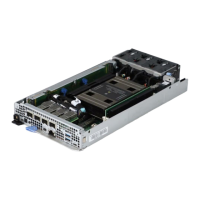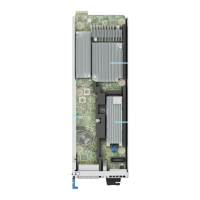Table 40. System Security details
Option Description
CPU AES-NI Improves the speed of applications by performing encryption and decryption by using
the Advanced Encryption Standard Instruction Set (AES-NI). This option is set to
Enabled by default.
System Password Sets the system password. This option is read-only if the password jumper is not
installed in the system.
Setup Password Sets the setup password. This option is read-only if the password jumper is not installed
in the system.
Password Status Locks the system password. This option is set to Unlocked by default.
TPM Information Indicates the type of Trusted Platform Module, if present.
Table 41. TPM 2.0 security information
Option Description
TPM Information
TPM Security
NOTE: The TPM menu is available only when the TPM module is installed.
Enables you to control the reporting mode of the TPM. When set to Off, the presence of the TPM is
not reported to the OS. When set to On, the presence of the TPM is reported to the OS. The TPM
Security option is set to Off by default.
When TPM 2.0 is installed, the TPM Security option is set to On or Off. This option is set to Off by
default.
TPM Information Indicates the type of Trusted Platform Module, if present.
TPM Firmware Indicates the firmware version of the TPM.
TPM Hierarcy Enables, disables, or clears the storage and endorsement hierarchies. When set to Enabled, the storage
and endorsement hierarchies can be used.
When set to Disabled, the storage and endorsement hierarchies cannot be used.
When set to Clear, the storage and endorsement hierarchies are cleared of any values, and then reset
to Enabled.
TPM Advanced
Settings
Specifies TPM Advanced Settings details.
Table 42. System Security details
Option Description
Intel(R) TXT Enables you to set the Intel Trusted Execution Technology (TXT) option. To enable
the Intel TXT option, virtualization technology and TPM Security must be enabled with
Pre-boot measurements. This option is set to Off by default. It is set On for Secure
Launch (Firmware Protection) support on Windows 2022.
Memory Encryption Enables or disables the Intel Total Memory Encryption (TME) and Multi-Tenant (Intel
®
TME-MT). When option is set to Disabled, BIOS disables both TME and MK-TME
technology. When option is set to Single Key BIOS enables the TME technology. When
option is set to Multiple Keys, BIOS enables the TME-MT technology. This option is set
to Disabled by default.
Intel(R) SGX Enables you to set the Intel Software Guard Extension (SGX) option. To enable the Intel
SGX option, processor must be SGX capable, memory population must be compatible
(minimum x8 identical DIMM1 to DIMM8 per CPU socket, not support on persistent
memory configuration), memory operating mode must be set at optimizer mode, memory
encryption must be enabled and node interleaving must be disabled. This option is set to
Off by default. When this option is to Off, BIOS disables the SGX technology. When this
option is to On, BIOS enables the SGX technology.
40 Pre-operating system management applications

